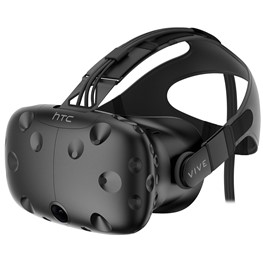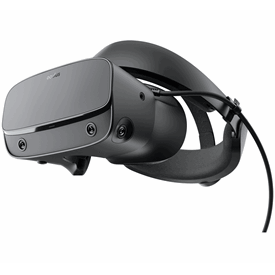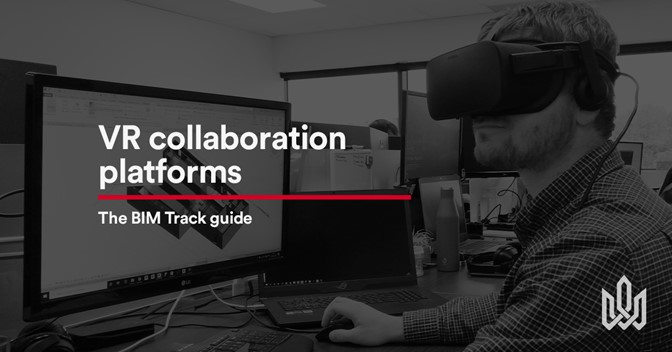2020-07-28 update: Since this article was originally published, we're proud to introduce our VR integrations with Vrex by Vixel, as well as Enscape.
VR technology is rich in potential uses for the BIM and AEC industry.
We want to share with you (in no particular order) some of the notable VR platforms on the market today that cater to BIM collaboration, design review, QA/QC and model presentation activities. Check out this short video summary or read on for more details.
Major VR platforms in AEC
Vrex by Vixel
2020-07-29 Update: It seems fitting to begin with our very first virtual reality integration with Vrex by Vixel, a VR platform that allows users to host virtual meetings inside their 3D models. Meeting attendees can join using their own VR headset to access features like teleporting, flying, creating and marking up issues, or as an observer of the VR session using the desktop mode.
The integration with BIM Track offers some amazing possibilities for hosting remote design reviews and coordination meetings, and bringing key stakeholders into the coordination process remotely before making decisions. You are now able to sync issues between BIM Track and Vrex to bring your design workflow to the next level.
Video courtesy of Vrex
Visit their website:
vrex.no
To see the BIM Track + Vrex integration in action, you can also watch our joint demo here.
IrisVR
Prospect by IrisVR stands out for its user-friendly interface and model-reading capabilities, including reading Sketchup, Rhino, FBX & OBJ files. As with all VR platforms, multiple members can collaborate in a shared VR environment. VR model review and QA/QC is a simple process due to the ability of the system to read Navisworks and Revit models. This makes it an attractive tool for GCs and managerial teams in particular, as well as communicating design intent to teams and stakeholders.
Video courtesy of Iris VR
Visit their website:
IrisVR.com
InsiteVR
InsiteVR stands out as the only platform on this list with a BIM360 integration in addition to Navisworks, Revit and SketchUp. Another feature of note is their speech-to-text annotation capabilities, which allows you to create text markups, and generates a nifty post -meeting PDF report that contains all the annotations and comments made during your VR meeting. Like most of the platforms on this list, Insite allows for multi-user VR collaboration.
Video courtesy of InsiteVR
Visit their website:
InsiteVR.com
The Wild
The Wild supports multi-user VR collaboration, and works with Revit and SketchUp workflows, and supports speech-to-text comments etc. It also has an in-built in sketching tool allowing users to create 3D objects in a VR environment. What sets The Wild apart, is the fact that model is cloud-based, allowing for faster & easy access.
Video courtesy of The Wild
Visit their website:
TheWild.com
Enscape
It’s safe to say Enscape is currently the king of photorealistic software in VR. It’s an ideal tool for designers, architects and their clients alike to give a true sense of the space with realistic, detailed models (Enscape offers integrations with Revit, ArchiCad, SketchUp and Rhino).
While it only allows for single user experiences, so isn’t as suitable for GCs (Navisworks also not supported), walkthroughs can still be shared. It is a top-notch presentation tool for owners and architects looking to explain design intent models to teams and stakeholders as well as conduct QA/QC sessions in an eye-catching manner for things like material selection validation. It is also worth mentioning that Enscape is a fairly affordable solution.
2020-07-29 Update: You can check out our new integration with Enscape here.
Video courtesy of Enscape
Visit their website:
Enscape3D.com
Unity VR
Unity VR is a major real-time 3D development platform that has been widely used to create VR and AR games, 3D animations and more - along with its capability to conduct model walkthroughs.
Unity is currently able to import IFC files using the PiXYZ Plugin. Once the 3D models are imported users can start adding realistic textures, lighting and other effects and view those changes in real time. Additionally, Unity can also import element data, which can be viewed while conducting walkthroughs. Similar to Enscape, Unity also allows users to create interactive walkthroughs that can be viewed at a later time. Stay tuned for some release new from Unity coming this fall for their new AEC-focused software Reflect.
Video courtesy of Unity.com
Visit their website:
Unity.com
Twinmotion by Unreal Engine
If you’ve played a video game from 2000 onward , there’s a 99% chance you will have played something that was developed with Unreal Engine, and including VR and AR games.
Using its decades of experience developing high quality visuals and virtual experiences (if you think about it, walking around in a VR model isn’t fundamentally different from playing a VR game), Unreal has also spread its reach to model visualization and presentation with Twinmotion. Users can import their BIM models from Revit and ARCHICAD in one click. Twinmotion can also read FBX, C4D and OBJ files. It offers similar features to Unity VR such as editing model visuals and viewing those changes in real-time. It is also integrated with Samsung Gear VR, Oculus and Google VR.
Video courtesy of Twinmotion
Visit their website:
https://www.unrealengine.com/en-US/twinmotion
VR headsets for AEC
Now let's talk about the hardware - it wouldn’t be possible to have these VR workflows without VR headsets and a juiced PC (powerful processor, lots of RAM, and a powerful graphics card).
All the platforms listed above support :

HTC Vive headsets

Oculus Rift headsets
The more recent Oculus Quest is supported by IrisVR, InsiteVR & The Wild. Quest is a standalone device - meaning you don’t need to have it connected to a desktop, unlike the other VR headsets. At the same time, the processor in the Quest headset will not be able to handle large / complex 3D files.
Not sure which headset is right for you?
Our friends over at IrisVR recently updated their headset quiz to help you find the perfect match for your needs.
Can I raise and work on BIM Track issues when working in VR?
The short answer: Not yet.
But the long answer? Exciting.
Let's say your firm is using or planning to use a VR platform, and you would like to introduce BIM Track into the flow. You can use our API for this purpose, which allows BIM Track to communicate with those VR platforms. Those platforms will be able to pull coordination information through the BIM Track API and allow the transfer of communication through it.
Many of the VR platforms above offer markup features - such allowing you to draw on the virtual model as you walk through it, or even speech-to-text in some cases. These markups can be transferred to BIM Track (using the API), which in turn can be viewed / actioned in Revit or Navisworks for example, or other tools in our growing list of software integrations.
This is just an example to whet the appetite, stay tuned for more news and possible integrations with VR platforms in the near future!

